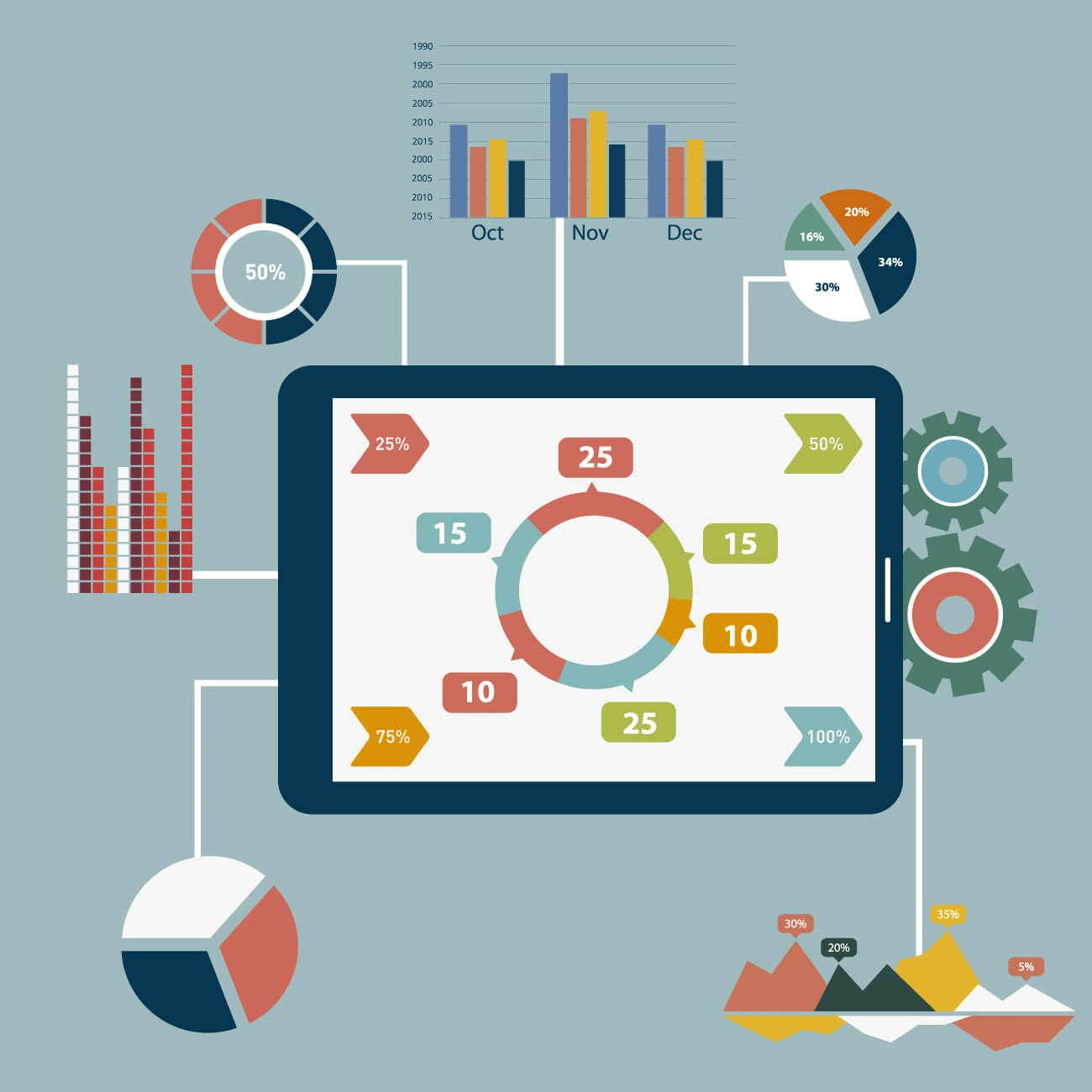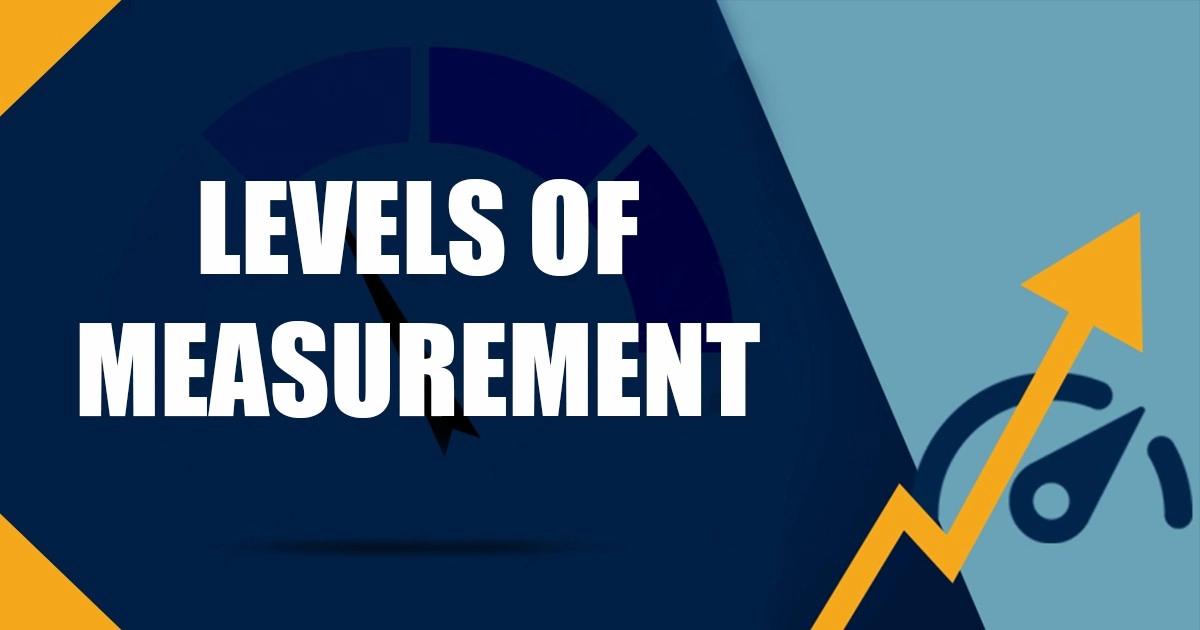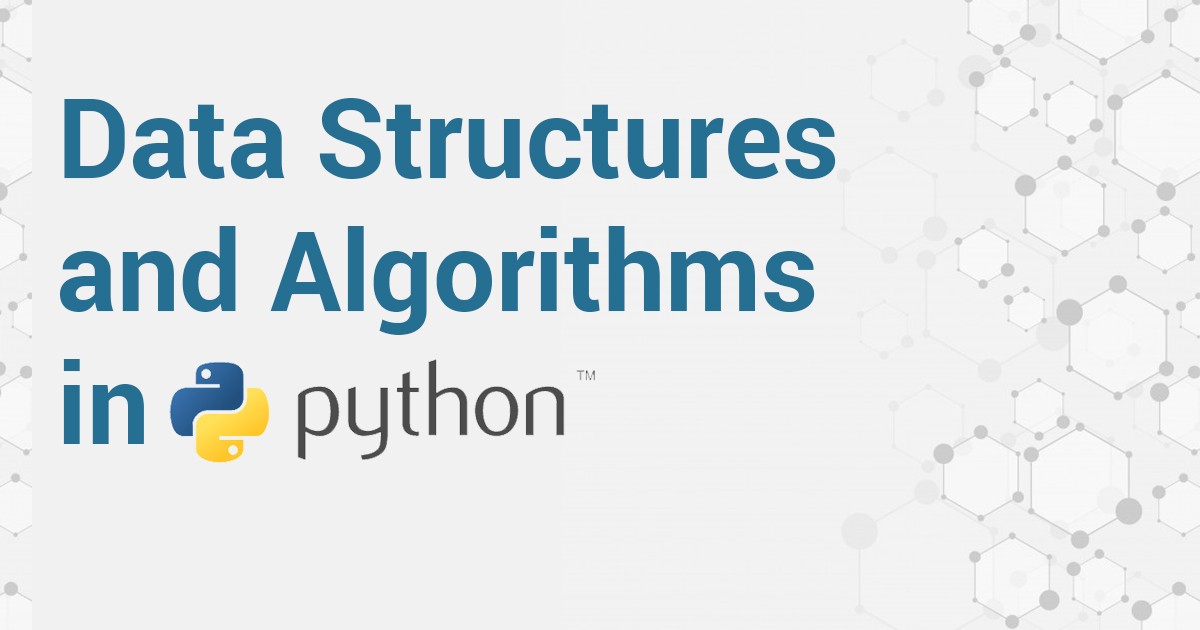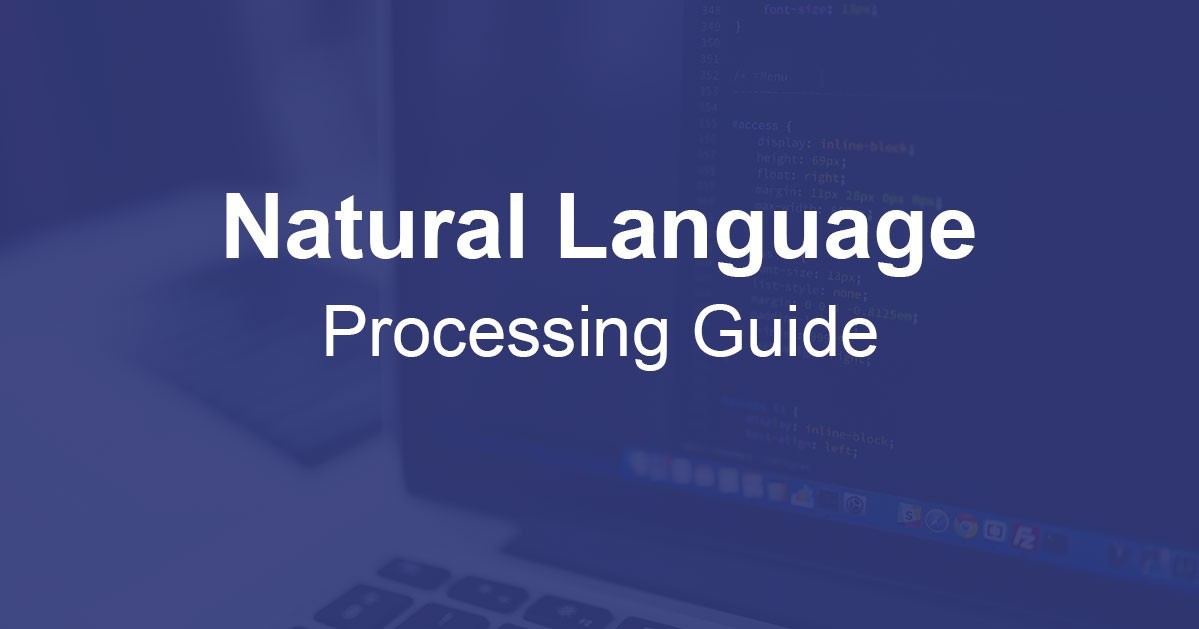Stanley Smith Stevens wrote about the four levels and scales of measurement: nominal, ordinal, interval, and ratio, in a 1946 article in Science, titled “On the Theory of Scales of Measurement…” Each level of measurement and its corresponding scale is capable of measuring one or more of the four properties of measurement, which include identity, magnitude, equal intervals, and a minimum value of zero.
The levels of measurement or scale of measure may be roughly explained as a classification that describes the nature of information within the values assigned to variables. In Statistics, levels of measurement is explained as a scale of measurement of data according to which the differences between values can be quantified in absolute but not relative terms and for which any zero is merely arbitrary: for instance, dates are measured on an interval scale since differences can be measured in years, but no sense can be given to a ratio of times.
Reputed Psychologist Stanley Smith Stevens developed the best-known classification with four levels, or scales, of measurement, namely: nominal, ordinal, interval, and ratio. Other classifications of levels include those by Chrisman and by Mosteller and Tukey.

Why Levels Of Measurement?
Levels of measurement help us decide how to interpret the data from that variable. When you already know that a measure is nominal, then you know that the numerical values are just shortcodes for the longer names. Also, knowing the Level of Measurement helps you decide what statistical analysis is appropriate on the values that were assigned. If for instance, a measure is nominal, then you already know that you would never average the data values or do a t-test on the data.
Noted psychologist Stanley Smith Stevens is credited to have developed the best-known classification with four levels, or scales, of measurement: nominal, ordinal, interval, and ratio.

Different Levels Of Measurement
https://www.youtube.com/watch?v=IQ0oGKGMWas
Different levels of measurement called for different statistical techniques. We will look at each of these levels of measurement. In this discussion, we will delve deeper into these levels of measurement. My focus areas will be as follows:
1. Nominal Level Of Measurement
The Nominal level of measurement is usually considered as the lowest of the four ways to characterize data. By Nominal expert mean “in name only” and that in a way helps us understand what this level is all about. Nominal data deals with names, categories, or labels.
The most essential thing about nominal scales is that they do not imply any ordering among the responses.
The nominal level of measurement examples: when classifying people according to their favourite colour, there is no special reason by which pink is placed “ahead of” blue. Responses are simply categorized.
Data at the nominal level is qualitative. For example, Colors of eyes, yes or no responses to a survey, and even your favorite breakfast cereal all deal with the nominal level of measurement. Also, certain facts and numbers associated with them, such as employee ID, are nominal since it is used to “name” an individual employee in the office.
Other concrete examples of Nominal level of measurement are:
(i) In Grammar, The Parts of Speech: Noun, Verb, Preposition, Article, Pronoun, Etc.
(ii) In Politics, Power Projection: Hard Power, Soft Power, Etc.
(iii) In Biology, The Taxonomic Ranks Below Domains: Archaea, Bacteria, And Eukarya
(iv) In Software Engineering, Type of Faults: Specification Faults, Design Faults, And Code Faults
2. Ordinal Level Of Measurement
Data at the Ordinal level of measurement can be ordered, but no meaningful differences can be drawn between the data. Ordinal scales are typically measuring of non-numeric concepts like satisfaction, happiness, comfort, etc.
One of the major drawbacks of an Ordinal level of measurement is that it often lacks the capability required to capture important information that is presented in the other scales we examine. In particular, the difference between two levels of an ordinal scale cannot be assumed to be the same as the difference between two other levels. In our satisfaction scale, for example, the difference between the responses “highly dissatisfied” and “somewhat dissatisfied” is probably not equivalent to the difference between “somewhat dissatisfied” and “somewhat satisfied.”
Ordinal level of measurement does not allow us to determine whether the two differences reflect the same difference in terms of psychological satisfaction. Statisticians explain this by saying that the differences between adjacent scale values do not necessarily represent equal intervals on the underlying scale giving rise to the measurements.

Just consider this: What if a researcher had measured satisfaction by asking consumers to indicate their level of satisfaction by simply asking them to rate on a scale of one to four? Would the difference between the responses of one and two necessarily reflect the same difference in satisfaction as the difference between the responses two and three? The simple answer is No. Changing the response format to numbers does not change the meaning of the scale.
Another example of Ordinal level of measurement: you may think of the top ten metro cities in India that are ranked on a scale of one to ten. But is there a lot of difference between the rankings; the quality of life and facilities available in city number 1 and city number 2? The answer is: is not possible to make out the difference by merely looking at two numbers.
Quite similar to the nominal level of measurement, data at the Ordinal level of measurement is not recommended to be used in calculations.

3. Interval Level Of Measurement
The Interval level of measurement, the next level deals with data that can be ordered. It is to be noted that differences between the data matter a lot. Interval scales are numerical scales in which intervals have the same interpretation throughout. However, data at this level does not have a definite starting point.
Interval Level of Measurement Examples:
The Fahrenheit and Celsius scales of temperatures are two very relevant examples of data at the interval level of measurement. Let us assume 30 degrees is lower than 60 degrees which are again lesser than 90 degrees. Here, differences make sense indeed. However, 0 degrees (in both scales) cold as it may be done not represent the total absence of temperature. This proves that the Interval level of measurement is not perfect.
Since an interval level of measurement has no true zero points, computing the ratios of temperatures does not make sense. For instance, there is no sense in which the ratio of 40 to 20 degrees Fahrenheit is the same as the ratio of 100 to 50 degrees; no noticeable physical property is preserved across the two ratios.
If the “zero” label were applied at the temperature that Fahrenheit happens to label as 10 degrees, the two ratios would instead be 30 to 10 and 90 to 40. For this simple reason, we cannot say that 80 degrees is “twice as hot” as 40 degrees. Such a claim would depend on an arbitrary decision about where to “start” the temperature scale, namely, what temperature to call zero (whereas the claim is intended to make a more fundamental assertion about the underlying physical reality).
Also, data at the interval level can be used in calculations. However, data at this level does lack one type of comparison. Even though 3 x 30 = 90, it is not correct to say that 90 degrees Celsius is three times as hot as 30 degrees Celsius.

4. Ratio Level Of Measurement
In the Ratio level of measurement ratio measurement, an absolute zero exists that is meaningful. This means that you can construct a meaningful fraction (or ratio) with a ratio variable. Weight is a ratio variable. In applied social research most “count” variables are the ratio, for example, the number of leads generated in the past six months. You can have zero clients and because it is meaningful to say that “…we had twice as many clients in the past six months as we did in the previous six months.”
A classic example of a Ratio level of measurement is the amount of money you have in your wallet right now (could be 45 cents, $15, etc.). Money is measured on a ratio scale, more than anything else because, in addition to having the properties of an interval scale, it has a true zero point: if you have zero money, this implies the absence of money. Since money has a true zero point, it makes sense to say that someone with 50 cents has twice as much money as someone with 25 cents.
There is a hierarchy implied in the level of measurement idea. At lower levels of measurement, assumptions tend to be less restrictive and data analyses tend to be less sensitive. At each level up the hierarchy, the current level includes all of the qualities of the one below it and adds something new. In general, it is desirable to have a higher level of measurement (e.g., interval or ratio) rather than a lower one (nominal or ordinal).
Ratio scales provide a plethora of possibilities when it comes to statistical analysis. These variables can be meaningfully added, subtracted, multiplied, divided (ratios) countless times. The central tendency can be measured by mode, median, or mean; measures of dispersion, such as standard deviation and coefficient of variation can also be calculated from ratio scales.
Looking Beyond The Levels Of Measurement
Does the levels of measurement interest you? Lookup for reference matters on the levels of measurement, to know more latest researches on the classifications and frameworks. Also, read about the different approaches followed psychologists for measurement in statistical analysis. Data Science, which has a lot common with statistical measurement and predictability has also gained immense importance in the recent past.

Then you may want to consider pursuing a degree in Data Science. You might be a programmer, a mathematics graduate, or simply a bachelor of Computer Applications. Students with a master’s degree in Economics or Social Science can also be a data scientist. Strong knowledge of Data Analytics tools is required for a rewarding career in data science. Take up a Data Science or Data Analytics course, to learn Data Science skills and prepare yourself for the Data Scientist job, you have been dreaming of.
Conclusion
You may also read my post on How to Create a Killer Data Analyst Resume for creating CVs that leave an impression in the mind of the recruiters. Digital Vidya offers one of the best-known Data Analytics courses for a promising career in Data Science. Industry-relevant syllabuses, pragmatic market-ready approach, hands-on Capstone Project are some of the best reasons for choosing Digital Vidya. In addition, students also get lifetime access to online course matter, 24×7 faculty support, expert advice from industry stalwarts, and assured placement support that prepares them better for the vastly expanding Big Data market


















